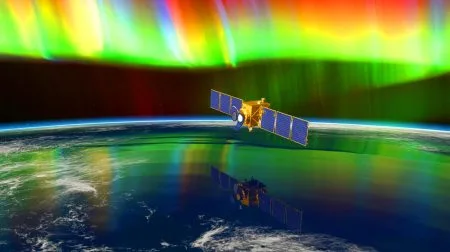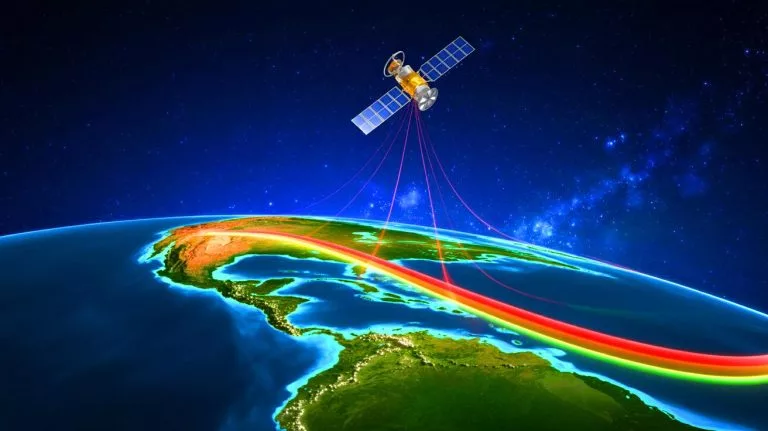| IN A NUTSHELL |
|
The South Atlantic Anomaly (SAA) has captured the attention of scientists and space agencies worldwide due to its potential impact on space technology and our understanding of Earth’s magnetic field. This region, characterized by a weakened magnetic field over South America and the South Atlantic Ocean, presents unique challenges as it continues to evolve. Originating from complex processes within the Earth’s core, the SAA is not just a scientific curiosity but a critical area of study. As the anomaly poses risks to satellites and other space technologies, it is imperative to delve into its origins, impact, and the ongoing efforts to mitigate its effects.
Understanding the South Atlantic Anomaly
At the heart of scientific inquiry is the South Atlantic Anomaly (SAA), a geomagnetic phenomenon that presents both intrigue and concern. This region is marked by a significant reduction in magnetic intensity, creating a breach in Earth’s protective shield. This weakness allows high-energy solar particles to dangerously approach the Earth’s surface.
The SAA’s origins are linked to the geodynamo, a process occurring in Earth’s outer core where the movement of molten iron and nickel generates the magnetic field. However, this generation is not uniform. Two primary factors contribute to the SAA’s formation: the tilt of Earth’s magnetic axis relative to its rotational axis and the presence of the African Large Low Shear Velocity Province, a dense structure located deep beneath the African continent. These factors disrupt magnetic field generation, causing a local polarity reversal and further weakening the magnetic field in the region.
“Scientists Shock the World”: This Pig Lung Transplant in China Sparks Ethical Controversy
Risks to Space Technology
The SAA’s magnetic vulnerability poses significant risks to space technology. Satellites passing through this region are exposed to energetic protons, which can cause single event upsets (SEUs). These incidents can lead to temporary malfunctions, data corruption, or even permanent damage if critical systems are affected.
To mitigate these risks, satellite operators often shut down non-essential systems when traversing the anomaly. The International Space Station (ISS) also crosses the SAA, with shielding that protects astronauts but leaves external instruments vulnerable. Reports indicate occasional glitches and data loss due to the SAA. Missions like the Ionospheric Connection Explorer (ICON) closely monitor the anomaly, adjusting operations to ensure safety and data integrity.
Dynamic Changes and Challenges
The SAA is not static; it is dynamically changing. Recent data from the ESA’s Swarm constellation and NASA’s historical SAMPEX mission confirm several alarming trends. The anomaly is drifting northwest, expanding, and beginning to split into two distinct lobes. This bifurcation creates additional hazardous zones for spacecraft, complicating predictive modeling of geomagnetic conditions.
Understanding the SAA’s changing morphology is crucial for the safety of current and future satellites. These developments require continuous monitoring and adaptation in satellite operations to mitigate potential disruptions. Scientists emphasize the need for updated models that can predict the anomaly’s evolution and its impact on space technology.
Predictive Modeling and Future Implications
To better understand and predict the SAA, NASA combines satellite data with simulations of Earth’s core dynamics. These inputs feed global models like the International Geomagnetic Reference Field (IGRF), which track the magnetic field’s evolution. These models are essential for planning space missions and understanding our planet’s internal structure.
While the SAA’s current evolution is unprecedented in the space era, geological records suggest such anomalies are not rare over long timescales. Scientists assert that the current SAA is not an early indicator of a magnetic pole reversal, a natural phenomenon occurring over hundreds of thousands of years. Nonetheless, studying the SAA is vital for protecting our technology and deepening our understanding of Earth’s forces.
As the South Atlantic Anomaly continues to evolve, the scientific community’s quest to understand and mitigate its impact remains crucial. This region’s potential to disrupt satellite operations and influence our understanding of Earth’s magnetic field poses intriguing questions. How will these changes affect our technological and scientific pursuits in the coming years?
Did you like it? 4.5/5 (29)





